- Walking Dead Saints and Sinners Best Weapons - July 31, 2023
- Pistol Whip Style Guide - June 8, 2023
- Bonelab Best Mods: Our Top 16 - February 15, 2023
As any VR enthusiast will attest to, the medium has a lot of untapped potential; we got a glimpse of what a full-fledged AAA title could look and play like with the revival of the Half-Life series, and titles like the recently released BONELAB showcased the wonders of physics to the world once again.
Technology is usually the driving force for innovation in a medium like this. We’re a long way off the Ready Player One-style experiences that are more real than real (if we even really want to get there), but new graphics cards and flashy next-generation HMDs slowly but surely continue to blur the lines.
Today, though, we’ll be discussing a game that uses VR to innovate differently. I’ve had the pleasure to speak with Robbie Cargill – Project Director of a new game called BLINKK: and the Vacuum of Space – to discuss how their title aims to provide a rich virtual reality experience targeted at the autistic population.
Thankfully, we’re seeing a much larger focus on accessibility in our video games, but this is the first time I’ve seen a focus on neurodivergence, and one of the first instances of accessibility-focused gaming I’ve seen within the VR platform.
Built From the Ground Up
Linden: Hi Robbie, thanks so much for joining me. This is such an interesting project: I’m eager to hear how it all started. Could you tell me how the team formed?
Robbie: Hi! Thanks for having me. Alison and Nick Lang are our two co-founders, and they’d been working on this idea for a few years before I met them and came on board.
They’d become interested in how virtual reality gaming could be used to help people with autism in particular: they have a daughter who’s autistic, and there’s a growing amount of research showing the benefits of VR for this population.
For the last few years, they were working on getting funding, and I came on board in 2020 to help get the project off the ground and build up the team. There are around ten of us in total and we’re all from a games development background.
Linden: I imagine having that personal attachment from the co-founders is a powerful driving force. Having built a solid team, how did you begin to piece things together, and what were your main inspirations for the game?
Robbie: So Alison and Nick had some aims at the outset of the project which informed the direction we took, and beyond that, we did a lot of our own research with the autistic population every step of the way – both in terms of having autistic and neuro-diverse people on our team and also in ensuring that we’re speaking to those populations outside the team as well.
The initial concept was how we could use games and virtual reality in particular to make something that is both as accessible and enjoyable as possible – but something that’s also going to provide benefits once play has ended as well, which was one of the most challenging aspects.
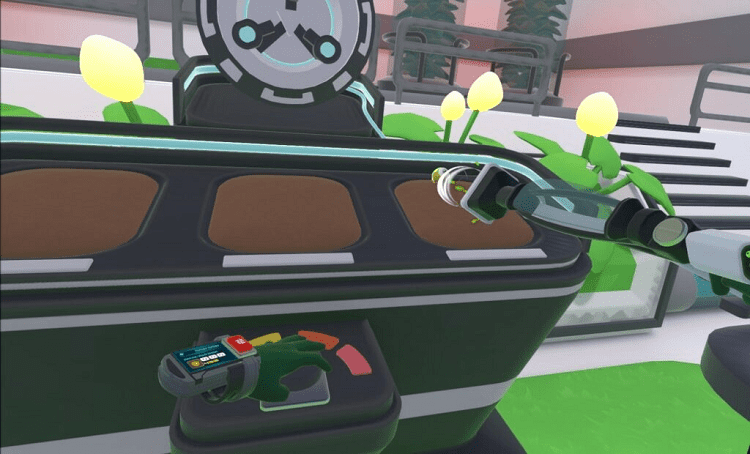
One of the main things we did in 2021 was putting together a bunch of prototypes to figure things out. For example, when it comes to giving instructions in virtual reality, is there an optimal way of doing that? How do you draw the player’s attention to certain areas? And how do these aspects apply to an autistic player?
Linden: What about the story? How does a game like this approach its narrative?
Robbie: Our inspiration in terms of the tone I guess would be kind of like a Pixar film – comedy with broad appeal. The game is set in a space station and you’re a new lab worker on their first day.
Something goes wrong with these creatures called the Groobs that escape around the station, and you’re essentially going in undercover as a security guard to recapture them so your boss doesn’t find out. Our writer Alex Shedlock has done a great job at making it funny, and we hope it will resonate with all ages.
Linden: One of the unusual aspects of this game for me is the way you’ve prioritized accessibility rather than simply including it as a feature. This isn’t really something you hear of: I presume the way you approach creating a title like this means you have to deviate quite significantly from traditional design philosophies.
Robbie: Yeah, I mean, one of the things we decided from the get-go was that we didn’t want to build a therapeutic and educational game. There should be these accessibility benefits, but there’s a priority to build something fun. We’re not getting this out to schools or anything like that – this is a game for players.
The aim is that this should be a fun game for anyone whether you’re neuro-typical or neuro-divergent. Regarding the way we looked at accessibility, I think the best way of conceptualizing it is this: most games that come out build the game first and then think afterward “how can we implement accessibility into this framework”.
I think from an optimal approach, accessibility should be in mind from the outset.
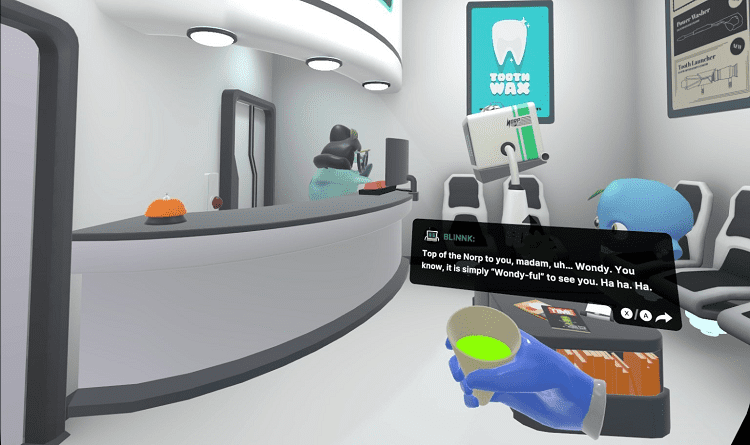
There have been certain mechanics that we’ve completely ruled out because they would hinder that goal.
For example, time limits were recognized in our own and other research as a source of stress for autistic players, so we didn’t include anything like that. Then you have sensory elements – both audio and visual – that are a hit with our audience.
An Evidenced-Based Experiment
I did a little digging myself to see what the research had to say about VR and neurodiversity, and found a small but promising body of research.
One study from last year found that VR could be “a dynamic and effective practice for supporting basic and complex social skills”, while a paper the year before saw potential in the platform for improving daily living skills.
As Robbie says, the game design was informed by other research showing the impact colors, music, and sound could have on the autistic mind.
I was curious as to the idea that there would be benefits from the game once play had ended.
Linden: Could you explain the idea of post-play benefits a little more? What sort of revelations did you have based on the current research and your own playtesting?
Robbie: There was a big focus on making players feel empowered in this virtual world that we’re building – that this would increase confidence once play has ended. Beyond that there are a few specific areas: we looked at certain challenges and scenarios that, generally speaking, autistic people face frequently.
One of these was visiting an airport: big crowds, a lot of noise, the security systems and not knowing if your bag is going to get searched etcetera.
These situations can be stressful for anyone, but for autistic people in particular this can be extremely traumatic. One of the big challenges for our team was looking to see if we could represent these challenges or scenarios in the game in a way that would provide people with increased confidence in the game.
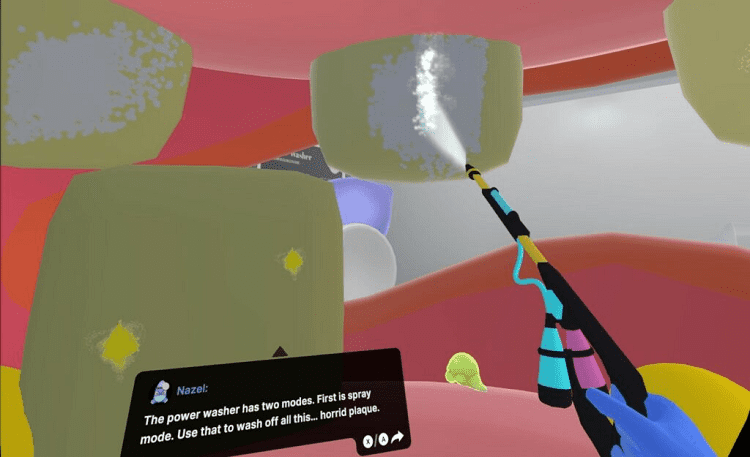
We looked to see if we could represent something in the game that was like these situations but without the stressful element, with the hope that these benefits would carry over.
One of the aspects that were reported to be stressful at an airport was the fear of the unknown, so we have a level that represents a security terminal where you’re the one searching people’s cases. The aim is that it gives people more of an expectation of that real-world scenario.
Linden: It sounds like this is a unique title from all aspects. Were there any current games that were inspirations for your game?
Robbie: We settled on a casual, light-hearted style with an emphasis on humor, so games like Job Simulator would be one of the most obvious sources of inspiration in terms of the gameplay and the tone.
I was interested to hear Robbie’s thought’s on VR’s strengths as a tool for future efforts in accessibility. There’s the obvious perk of being able to fully immerse the player in its ambitious sensory environment, but what about from a practical perspective?
Linden: What do you think are the inherent benefits of VR so far as accessibility? Do you think there’s more scope here for progress compared to flat-screen gaming?
Robbie: Well VR in particular gives you a sense of presence in a video game that ordinarily you don’t have. Even considering aspects like hand tracking, just removing the controller altogether could be a massive accessibility benefit in general.
Another key benefit to virtual reality is that you’re able to curate and control that experience through sensory inputs and that sort of thing, in a way that the real world can’t. Of course, we should look to make the real world as accessible as possible, but the limitations there don’t apply to the virtual world.
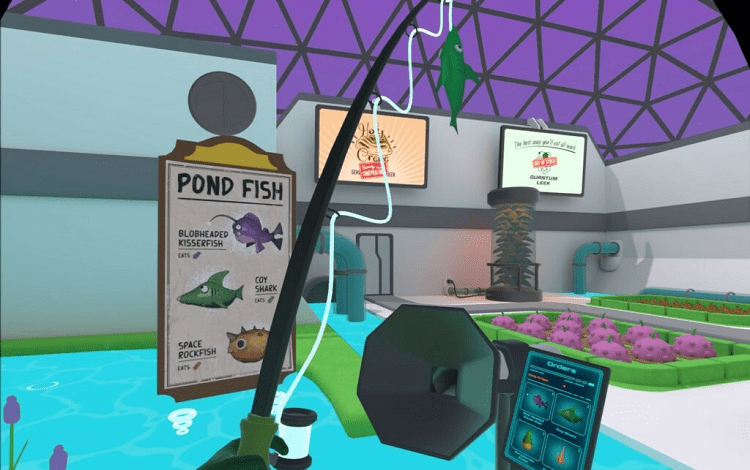
I also made sure to get Robbie’s thoughts on the future of VR technologies. We heard Gabe Newell discuss how Valve was heavily researching Brain Controlled User interfaces (BCIs), proclaiming that the industry was “closer to the Matrix than people think”. Will this sort of future be a net positive or negative?
A Bright Future
Linden: What do you think about the future of VR, such as brain-controlled user interfaces? Do you see emerging technology like that as worrying?
Robbie: I think that’s inevitably the way it’s going to go. If you compare Quest 2 to the original Rift, for example, the difference is huge, and once the visual fidelity has reached a certain level.
Once the hand tracking has improved, there’s a certain limitation there that you just can’t get around. Eventually, you’ll need to have some interfacing with the brain, whatever that might be.
Like most technological advancements, it’s both very exciting and very concerning.
Linden: And regarding accessibility specifically, do you think this sort of futuristic tech could be beneficial?
Robbie: I think that ultimately the more obstacles you can remove the more scope you have for accessibility. Even now you’ve got options for seated, standing, room-scale etcetera – it opens up more options that you don’t have with a VR game, and as we progress further and those hardware barriers decrease, that will ultimately do wonders for accessibility.
Linden: What do you think is the most important step forward the industry needs to make concerning accessibility?
Robbie: I think right now there just needs to be more. It would be great to have something standardized and have the consoles have some built-in accessibility features.
Regarding VR specifically, there just needs to be more research and development, and as I say, having that initial focus on accessibility from the get-go rather than trying to include it afterward as an afterthought.
Linden: We’ve talked a lot about VR as a whole, both in terms of the technology and as a concept, but is there any headset in particular you think works best with the game?
Robbie: The game will work great on all the major headsets, but I think the most accessible right now is Quest 2 given that you don’t have any cables or have to set up sensors. That would be our primary device.
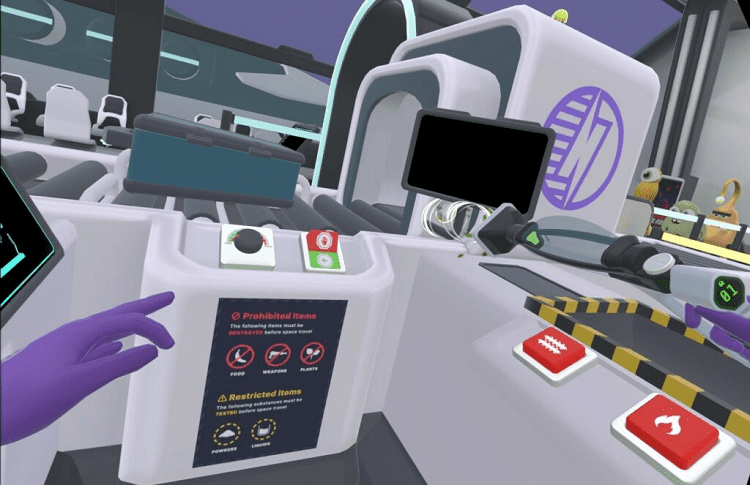
In some of our early testing with the autistic groups that came in, we were using the link cable and that was actually one of the biggest findings we had from that initial research – the problems people have when moving around in a virtual space.
Frequently Asked Questions
Question: Have Changingday made any other games?
Answer: BLINKK: and the Vacuum of Space is the studio’s debut title, but there will surely be more innovation to come in the future off the back of this game.
Question: I’m interested in this game for my autistic son/daughter, but we don’t have a headset. Which model is recommended?
Answer: If you don’t have a headset yet and are new to VR, I think your best bet is the Meta Quest 2. It’s an untethered device so you won’t need a separate PC to use it, and it’s widely considered one of the best headsets available right now.
Question: How much is the game and where can I buy it?
Answer: The game is currently available for £19.99 on both Steam and the Oculus store. Recommended PC specs can be viewed on the description page.
Wrapping Up
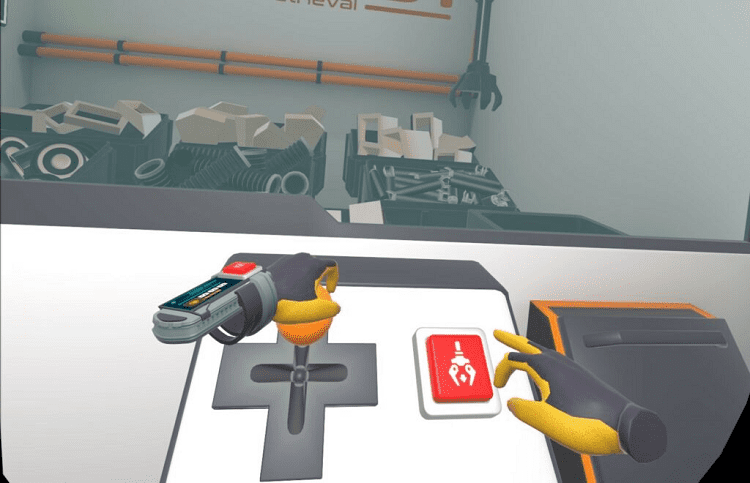
Having played the game myself and had this enlightening chat with Robbie, it’s clear the team is onto something. They’re laying the groundwork for future experimentation with this budding medium, and they’re part of a historical shift for making video games a more inclusive and accepting form of entertainment.
With the insight to prioritize accessibility from the get-go, and with the inherent benefits VR has for facilitating new and creative ideas, I’m thoroughly excited to see what Robbie and the rest of the team come up with next.
If you’re interested in my own thoughts on the finished product, be sure to check out my review here on the site. I thank Robbie for taking the time to talk with us, and we wish the team all the best with their debut title and beyond.

